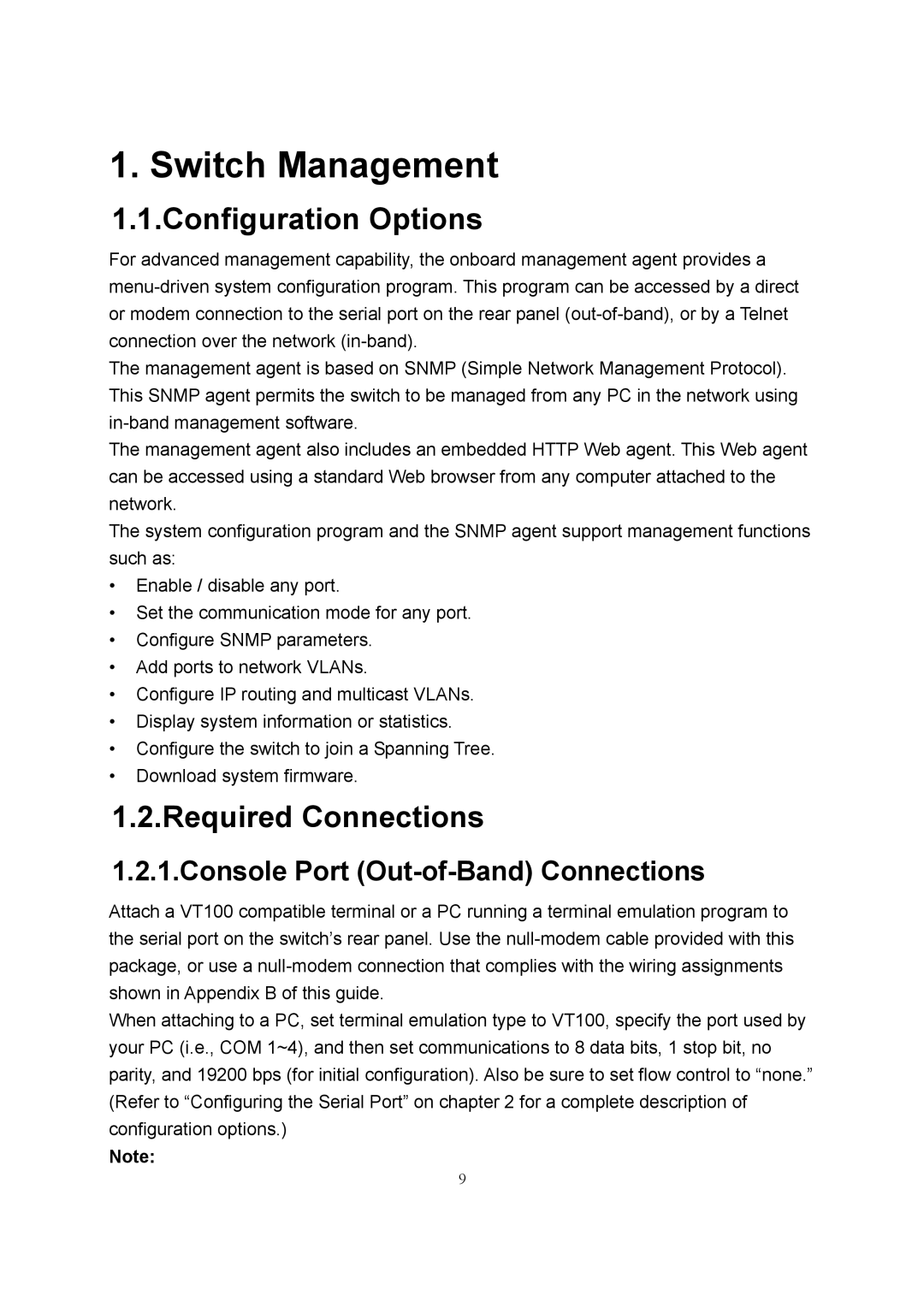1. Switch Management
1.1.Configuration Options
For advanced management capability, the onboard management agent provides a
The management agent is based on SNMP (Simple Network Management Protocol). This SNMP agent permits the switch to be managed from any PC in the network using
The management agent also includes an embedded HTTP Web agent. This Web agent can be accessed using a standard Web browser from any computer attached to the network.
The system configuration program and the SNMP agent support management functions such as:
•Enable / disable any port.
•Set the communication mode for any port.
•Configure SNMP parameters.
•Add ports to network VLANs.
•Configure IP routing and multicast VLANs.
•Display system information or statistics.
•Configure the switch to join a Spanning Tree.
•Download system firmware.
1.2.Required Connections
1.2.1.Console Port (Out-of-Band) Connections
Attach a VT100 compatible terminal or a PC running a terminal emulation program to the serial port on the switch’s rear panel. Use the
When attaching to a PC, set terminal emulation type to VT100, specify the port used by your PC (i.e., COM 1~4), and then set communications to 8 data bits, 1 stop bit, no parity, and 19200 bps (for initial configuration). Also be sure to set flow control to “none.” (Refer to “Configuring the Serial Port” on chapter 2 for a complete description of configuration options.)
Note:
9
